#cortex a53
Explore tagged Tumblr posts
Text
https://s.click.aliexpress.com/e/_EzPpij3

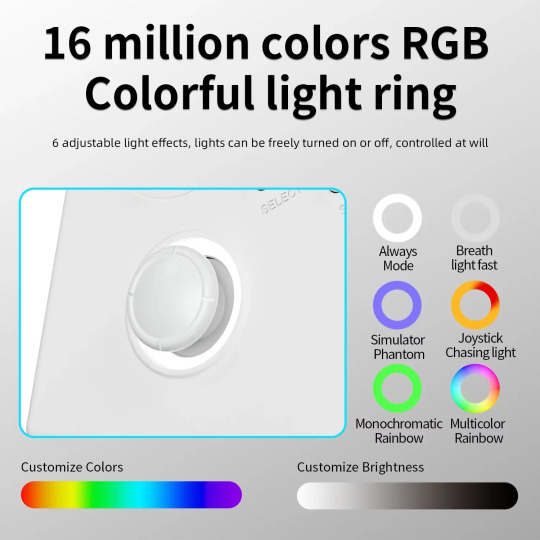
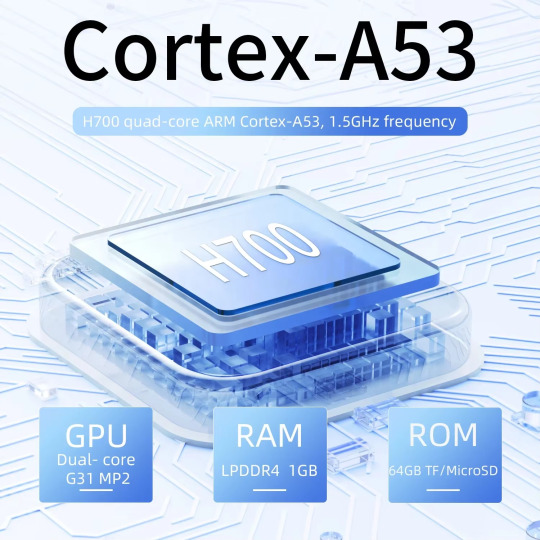

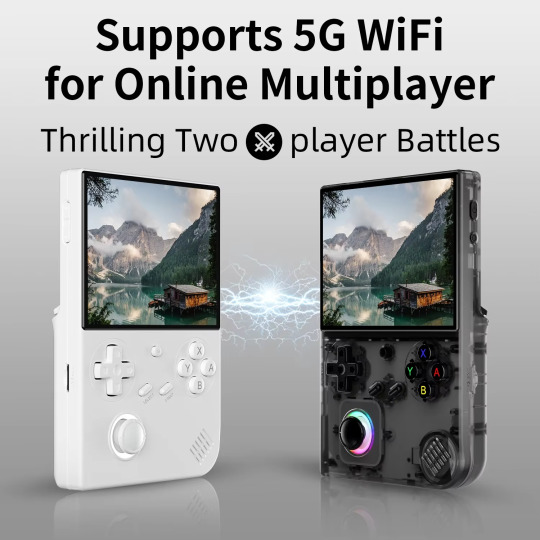
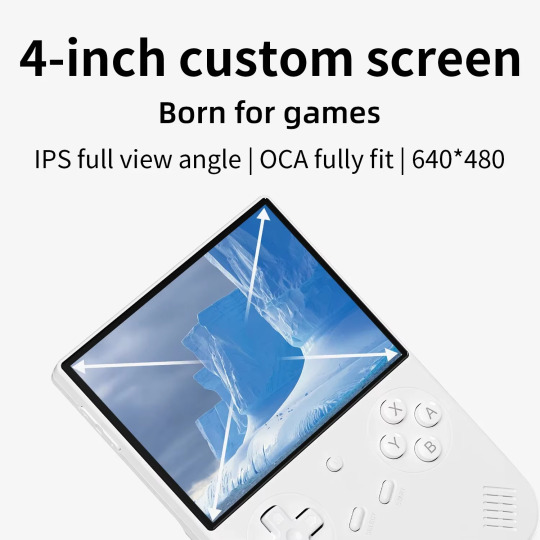
ANBERNIC RG40XXV Handheld Game Console 4''IPS Screen Video Output Joystick RGB Lighting Effect Streaming RG 40XXV Ebook MP4 Gift
Price Now: USD 64.05 (Original price: USD 112.37, 43% off)
0 notes
Text
2 notes
·
View notes
Text
MECOOL KM7 Plus vs StreamX X1 Pro – Which is Better?


MECOOL KM7 Plus and StreamX X1 Pro offer competitive features in the Android TV box market. The MECOOL KM7 Plus impresses with its powerful Amlogic S905X2 chipset, providing smooth performance for streaming and gaming. Its 2GB RAM ensures seamless multitasking, while the 15GB storage offers ample space for apps and media.
On the other hand, the StreamX X1 Pro boasts a slay design and a user-friendly interface. Its Quad-core ARM Cortex-A53 chipset delivers fast processing speeds, enhancing the general viewing experience. With 4GB of RAM and 64GB of storage, it matches the KM7 Plus in performance and storage capacity.
Ultimately, the choice between the two comes down to personal preference. If you prioritize performance and gaming capabilities, the MECOOL KM7 Plus is the better option. However, if design and user experience are more important to you, the StreamX X1 Pro is worth considering.
3 notes
·
View notes
Text
Raspberry Pi Board: Revolutionizing Computing and Education
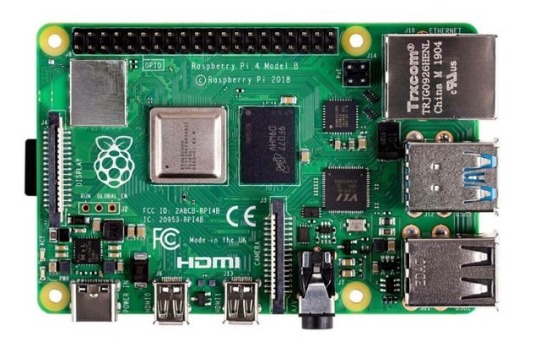
The Raspberry Pi board is a series of small, affordable single-board computers developed by the Raspberry Pi Foundation, a UK-based charity focused on promoting computer science education and digital literacy. Since its launch in 2012, the Raspberry Pi has transformed from a niche educational tool into a versatile platform used in a wide range of applications, from DIY electronics projects to industrial automation.
A Brief History
The first Raspberry Pi, the Model B, was released in February 2012. Designed to promote basic computer science in schools and developing countries, it featured a 700 MHz ARM11 processor, 256 MB of RAM, and basic connectivity options. The success of the Model B led to a rapid expansion of the Raspberry Pi lineup, with various models offering improved performance, more memory, and enhanced connectivity.
Key Features and Models
Raspberry Pi 1 Model B (2012):
Processor: 700 MHz ARM11
Memory: 256 MB RAM
Ports: 2 USB 2.0 ports, HDMI, Composite video, 3.5mm audio jack, Ethernet
Storage: SD card slot
Raspberry Pi 2 Model B (2015):
Processor: 900 MHz quad-core ARM Cortex-A7
Memory: 1 GB RAM
Ports: 4 USB 2.0 ports, HDMI, Composite video, 3.5mm audio jack, Ethernet
Storage: MicroSD card slot
Raspberry Pi 3 Model B (2016):
Processor: 1.2 GHz quad-core ARM Cortex-A53
Memory: 1 GB RAM
Ports: 4 USB 2.0 ports, HDMI, Composite video, 3.5mm audio jack, Ethernet
Wireless: Wi-Fi and Bluetooth
Raspberry Pi 4 Model B (2019):
Processor: 1.5 GHz quad-core ARM Cortex-A72
Memory: Options of 2 GB, 4 GB, and 8 GB RAM
Ports: 2 USB 3.0 ports, 2 USB 2.0 ports, 2 Micro HDMI ports, Ethernet, USB-C for power
Wireless: Wi-Fi and Bluetooth
Raspberry Pi Zero (2015) and Zero W (2017):
Processor: 1 GHz single-core ARM11
Memory: 512 MB RAM
Ports: Mini HDMI, Micro USB OTG, Micro USB for power, GPIO pins
Wireless (Zero W): Wi-Fi and Bluetooth
Applications and Uses
The versatility of the Raspberry Pi has led to its adoption in numerous fields:
Education:
Coding and Programming: Used in schools and educational programs to teach students programming languages such as Python, Scratch, and Java.
Computer Science Concepts: Introduces concepts like hardware, software, and networking.
DIY Projects and Maker Community:
Home Automation: Controls smart home devices, including lights, thermostats, and security systems.
Media Centers: Powers home media centers using software like Kodi.
Retro Gaming: Emulates classic gaming consoles using software like RetroPie.
Industrial and Commercial Applications:
IoT Devices: Serves as a hub for Internet of Things (IoT) devices, enabling data collection and remote control.
Automation and Control Systems: Used in factories and labs for monitoring and controlling equipment.
Research and Development:
Prototyping: Facilitates rapid prototyping of electronic devices and systems.
Data Collection: Gathers data from various sensors in environmental and scientific research.
Community and Ecosystem
The Raspberry Pi has cultivated a vibrant global community of developers, hobbyists, educators, and students. Online forums, tutorials, and community projects provide extensive support and resources for users at all skill levels. The Raspberry Pi Foundation also offers official accessories, including cases, cameras, and expansion boards, further enhancing the functionality of the Raspberry Pi.
Conclusion
The Raspberry Pi board has revolutionized the way people learn about and interact with technology. Its affordability, versatility, and extensive support network have made it an indispensable tool in education, DIY projects, and professional applications. As technology continues to evolve, the Raspberry Pi Foundation remains committed to expanding the capabilities and accessibility of this remarkable platform, ensuring that computing remains within reach for everyone.
3 notes
·
View notes
Text

Smartphone TCL T509K1-2BLCA112 4 GB RAM 128 GB Blau Ocean Blue 6,75" ARM Cortex-A53 http://dlvr.it/TLT95X
0 notes
Text
Driving Smarter Microgrids with Forlinx Embedded!
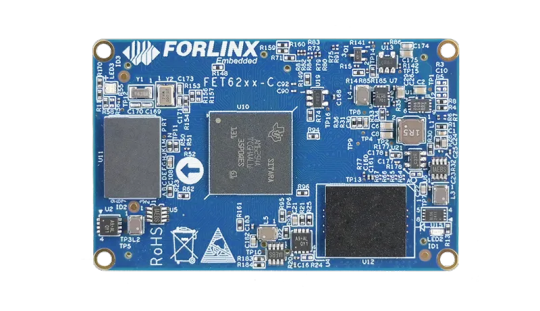
To support global carbon neutrality goals, microgrids are becoming a vital piece of the energy puzzle. The Forlinx AM62x-based FET6254-C SoM is revolutionizing microgrid coordination with:
⚡ Multi-core architecture (Cortex-A53 + Cortex-M4F) 🔄 Millisecond-level real-time control 🔌 Rich interfaces: CAN-FD, UART, TSN Ethernet 🌡️ Industrial-grade design: -40°C to +85°C

Perfect for PV, wind, storage & EV charging station coordination.
0 notes
Text
TX40 Pro 12K ULTRA HD Android Smart TV Box
TX40 Pro 12K ULTRA HD Android Smart TV Box Price In Bangladesh Features: 12K Ultra HD Resolution – Delivers stunning picture quality for an immersive viewing experience. Powerful Quad-Core Processor – ARM Cortex A53 CPU with G31 OpenGL 3.2 GPU for smooth performance. Ample Memory & Storage – 16GB RAM + 256GB storage for seamless multitasking and media storage. Advanced Connectivity – Wi-Fi,…
0 notes
Text
Chinese Researchers Release World’s First AI-Based Fully Automated Processor Chip Design System
— Global Times | June 10, 2025

Photo: VCG
Chinese Researchers have released the World’s First Fully Automated Processor Chip Design System based on Artificial Intelligence (AI) Technology, making AI-designed chips a reality. With its designs comparable to the performance of human experts across multiple key metrics, the system represents a significant step toward fully automated chip design, potentially revolutionizing how chips are designed and manufactured.
The system named QiMeng jointly released by the Institute of Computing Technology, Chinese Academy of Sciences (CAS) and the Institute of Software of CAS, were recently published on arXiv.org, the Science and Technology Daily reported on Tuesday.
The QiMeng works like an automated architect and builder for computer chips. Instead of engineers manually designing every component, it uses AI to handle both the hardware and software aspects of chip creation.

China’s AI Chip Tool QiMeng Beats Engineers, Designs Processors In Just Days! With QiMeng, China’s Top Scientists Have Used AI To Build Processors Comparable To Intel’s 486 and Arm’s Cortex A53. June 10, 2025, Aamir Khollam Representational Image of AI-Driven Chip Design Process in China. Михаил Руденко/iStock. InterestingEngineering.Com
Expected to transform the design paradigms for the hardware and software of processor chip, the system not only significantly reduces human involvement, enhances design efficiency and shortens development cycles, but also enables rapid, customized designs tailored to specific application scenarios – flexibly meeting the increasingly diverse demands of chip design, the Science and Technology Daily reported.
Processor chips are hailed as the “Crown Jewel” of modern science and technology, with their design processes being highly complex, precise, and requiring a very high level of expertise. Traditional processor chip design relies heavily on experienced expert teams, often involving hundreds of people and taking months or even years to complete, resulting in high costs and lengthy development cycles.
Meanwhile, with the development of emerging technologies such as AI, cloud computing and edge computing, market demands for specialized processor chips and their corresponding foundational software optimization are growing rapidly. However, the number of professionals engaged in the processor chip industry in China is severely insufficient to meet this increasing demand.
In response to these challenges, the QiMeng system leverages advanced AI technologies such as large models to realize automated CPU design. It can also automatically configure corresponding foundational software for the chip, including operating systems, compilers and high-performance kernel libraries, according to the report.
#China 🇨🇳#Global Times#Chinese Researchers#World’s First AI-Based Fully Automated Processor Chip Design System#Artificial Intelligence (AI) Technology#Institute of Computing Technology | Chinese Academy of Sciences (CAS) | Institute of Software of CAS#“Crown Jewel”
0 notes
Text

Quando ho ricevuto in redazione il nuovo AVM FRITZ!Box 6860 5G, mi sono trovato di fronte a un dispositivo che promette di rivoluzionare il concetto stesso di connettività domestica e mobile. Come recensore senior di dispositivi networking, ho dedicato tre settimane intensive al test di questo router in scenari diversificati. L'approccio al test è stato sistematico: prima una valutazione in laboratorio delle specifiche tecniche dichiarate, poi prove sul campo in condizioni reali, infine stress test prolungati per verificare stabilità e affidabilità. Ho prestato particolare attenzione all'esperienza utente quotidiana, quella che va oltre i numeri e tocca la praticità d'uso per famiglie e professionisti. Attualmente è disponibile sulla pagina ufficiale di Amazon. Design & qualità costruttiva L'impatto visivo del FRITZ!Box 6860 5G è immediato: siamo di fronte a un parallelepipedo compatto dalle dimensioni contenute (111 x 163 x 31 mm senza supporto), realizzato in plastica ABS di alta qualità con finitura opaca bianca che resiste efficacemente alle impronte. La sensazione al tatto trasmette solidità, con assemblaggi precisi e zero scricchiolii anche sotto pressione. La certificazione IP54 rappresenta il vero punto di svolta progettuale. Durante i test, ho esposto il router a pioggia battente simulata e polvere fine per verificare l'efficacia delle guarnizioni. Il dispositivo ha superato brillantemente ogni prova, confermando la possibilità di installazione in ambienti esterni protetti. I due adattatori inclusi – rosso per interni e bianco per esterni – non sono semplici accessori estetici ma elementi funzionali che modificano l'orientamento delle antenne interne per ottimizzare la ricezione. Il sistema di LED frontali merita una menzione speciale. Tre indicatori luminosi multicolore forniscono informazioni immediate sullo stato operativo: la barra superiore segnala la connessione Wi-Fi 6, quella centrale lo stato della rete mobile (con codici colore intuitivi: verde per 5G, blu per 4G, giallo per 3G), mentre i tre LED inferiori visualizzano l'intensità del segnale ricevuto. La luminosità è ben calibrata, visibile in pieno giorno ma non invasiva di notte. L'assenza di ventole di raffreddamento rappresenta una scelta progettuale coraggiosa. Il sistema di dissipazione passiva, basato su un dissipatore interno in alluminio e aperture strategiche nel case, mantiene le temperature operative sotto controllo anche durante utilizzi intensivi. La termocamera ha registrato picchi massimi di 35.1°C sulla superficie anteriore dopo tre ore di streaming 4K simultaneo su più dispositivi. Specifiche tecniche in sintesi narrativa Il cuore pulsante del router 5G è il modem Qualcomm Snapdragon X62, una soluzione di quarta generazione che supporta il Release 16 del 3GPP con dual carrier aggregation. Questo si traduce in velocità teoriche fino a 1.3 Gbps in download e 900 Mbps in upload su reti 5G SA (Standalone). La configurazione con quattro antenne MIMO 4x4 garantisce una ricezione ottimale anche in condizioni di segnale non ideale. Il processore principale è un Qualcomm IPQ8074, un SoC quad-core ARM Cortex-A53 a 2.2 GHz che gestisce sia il routing che la connettività wireless. La dotazione di memoria comprende 512 MB di RAM DDR3 e 256 MB di storage NAND Flash, sufficienti per il sistema operativo FRITZ!OS e le sue numerose funzionalità avanzate. Sul fronte wireless, troviamo il supporto completo per Wi-Fi 6 (802.11ax) in configurazione dual-band simultanea. La banda a 5 GHz raggiunge i 2402 Mbps teorici con canali da 160 MHz, mentre quella a 2.4 GHz si ferma a 600 Mbps. La tecnologia OFDMA (Orthogonal Frequency Division Multiple Access) migliora l'efficienza spettrale quando sono connessi numerosi dispositivi contemporaneamente. La connettività cellulare abbraccia un ventaglio impressionante di bande: per il 5G sono supportate le bande n1, n3, n5, n7, n8, n20, n28, n38, n40, n41, n75, n76, n77 e n78. Particolare rilevanza hanno le bande n75/76/77, ancora poco diffuse ma destinate a diventare cruciali per il 5G italiano nei prossimi anni. Per il 4G LTE, la compatibilità si estende alle bande 1, 3, 5, 7, 8, 20, 28, 32, 38, 40, 41, 42 e 43, tutte in configurazione MIMO 4x4. Configurazione iniziale e interfaccia L'esperienza di unboxing e prima configurazione del FRITZ!Box 6860 5G stabilisce immediatamente il tono professionale del prodotto. All'interno della confezione, oltre al router, troviamo l'alimentatore PoE+ (Power over Ethernet), due cavi LAN piatti da 2.5 metri resistenti ai raggi UV, i supporti per montaggio interno ed esterno, e una guida rapida multilingue con illustrazioni chiare. La procedura di setup iniziale si svolge attraverso l'interfaccia web raggiungibile digitando "fritz.box" nel browser. Il wizard multilingue (italiano incluso) guida passo passo attraverso l'inserimento della nano-SIM, la configurazione dell'APN (che il sistema riconosce automaticamente per i principali operatori italiani), e l'impostazione delle credenziali Wi-Fi. Un aspetto particolarmente apprezzabile è l'assistente di posizionamento: attraverso indicatori grafici in tempo reale, suggerisce come orientare il dispositivo per massimizzare la qualità del segnale 5G ricevuto. L'interfaccia FRITZ!OS, giunta alla versione 7.80 durante il periodo di test, rappresenta uno dei punti di forza del dispositivo. L'organizzazione logica dei menu, la ricchezza di opzioni avanzate presentate in modo accessibile, e la completezza delle statistiche in tempo reale la pongono ai vertici della categoria. Particolarmente utile la dashboard principale che mostra simultaneamente lo stato della connessione mobile, l'utilizzo di banda, i dispositivi connessi e gli eventi di sistema. La gestione via app MyFRITZ! per iOS e Android estende il controllo anche da remoto. Durante i test, ho potuto monitorare e gestire la rete domestica mentre ero in viaggio, ricevendo notifiche push per eventi importanti come nuovi dispositivi connessi o variazioni significative nella qualità del segnale. Prestazioni rete 5G e fallback 4G I test prestazionali in ambiente reale hanno prodotto risultati che meritano un'analisi approfondita. Nel centro di Milano, con copertura 5G TIM su banda n78, ho registrato velocità di picco di 635 Mbps in download e 89 Mbps in upload, con latenza media di 18 ms. Questi valori, seppur distanti dai massimi teorici, rappresentano prestazioni eccellenti per l'utilizzo quotidiano. Il comportamento del modem in zone con copertura mista 5G/4G si è rivelato particolarmente intelligente. Il sistema gestisce autonomamente il passaggio tra tecnologie (handover) privilegiando sempre la migliore combinazione di velocità e stabilità. Durante un test in movimento su treno ad alta velocità Torino-Milano, il router ha mantenuto la connessione attiva per l'intero percorso, alternando fluidamente tra 5G NSA, 5G SA e LTE Advanced a seconda della disponibilità. Con Vodafone, in zona suburbana con copertura 5G non ottimale, il sistema ha dimostrato la sua capacità di aggregare portanti 4G e 5G simultaneamente (EN-DC), raggiungendo comunque velocità aggregate di 380 Mbps. La funzione HPUE (High Power User Equipment) ha fatto la differenza in aree marginali, mantenendo connessioni stabili dove uno smartphone perdeva completamente il segnale 5G. Il test più interessante è stato con Iliad in area rurale toscana. Nonostante l'assenza di copertura 5G, il fallback su LTE Advanced con aggregazione di tre portanti ha garantito prestazioni sorprendenti: 285 Mbps in download e 42 Mbps in upload. La stabilità della connessione durante sessioni di lavoro prolungate (videoconferenze, trasferimento file pesanti) è stata impeccabile. Prestazioni Wi-Fi 6 & mesh La componente Wi-Fi 6 del FRITZ!Box 6860 5G si è rivelata all'altezza delle aspettative. I test con un laptop Dell XPS 15 dotato di scheda Intel AX210 hanno mostrato velocità di trasferimento locale fino a 1.8 Gbps sulla banda 5 GHz a distanza ravvicinata. La tecnologia beamforming adattivo ha dimostrato la sua efficacia mantenendo connessioni stabili anche attraverso due pareti in cartongesso. La copertura wireless si è dimostrata adeguata per un appartamento di 120 metri quadri su due livelli. Alla distanza di 15 metri con ostacoli, la velocità si attestava ancora sui 450 Mbps, più che sufficienti per streaming 4K multipli. La banda 2.4 GHz, seppur limitata nei throughput massimi, ha mostrato una penetrazione superiore, raggiungendo efficacemente anche il box auto interrato. L'integrazione con il sistema Mesh FRITZ! apre scenari interessanti per installazioni complesse. Durante il test, ho affiancato un FRITZ!Repeater 3000 AX per estendere la copertura al giardino. La configurazione automatica via WPS ha richiesto meno di un minuto, e il roaming tra access point si è rivelato trasparente per tutti i dispositivi testati. La tecnologia band steering automatica ha gestito intelligentemente la distribuzione dei client tra le due bande disponibili. Un aspetto particolarmente apprezzabile è la gestione QoS (Quality of Service) automatica che prioritizza il traffico in base al tipo di applicazione. Durante test con 25 dispositivi connessi simultaneamente (simulando un piccolo ufficio), le videochiamate hanno mantenuto qualità costante nonostante download pesanti in background su altre macchine. Funzionalità software e sicurezza FRITZ!OS rappresenta molto più di un semplice firmware: è un ecosistema software maturo che trasforma il FRITZ!Box 6860 5G in una centrale di controllo per la rete domestica o aziendale. Il sistema di parental control, accessibile sia via web che app, permette di definire profili di accesso granulari per ogni dispositivo, con limitazioni temporali, filtraggio contenuti e reporting dettagliato delle attività online. La funzionalità VPN integrata supporta sia WireGuard che IPSec, con wizard di configurazione che semplificano l'implementazione anche per utenti non esperti. Durante i test, ho configurato con successo accessi VPN da smartphone e laptop remoti, con prestazioni che hanno raggiunto i 95 Mbps in download attraverso WireGuard, testimoniando l'efficienza dell'implementazione. Il supporto VoIP con registrar SIP interno trasforma il router in un vero e proprio centralino telefonico. Ho collegato con successo telefoni cordless DECT e softphone su PC, gestendo chiamate attraverso il numero della SIM inserita via VoLTE. La qualità audio si è rivelata cristallina, con supporto per codec HD voice quando disponibile dall'operatore. Sul fronte sicurezza, oltre al firewall SPI (Stateful Packet Inspection) personalizzabile, troviamo funzionalità avanzate come il rilevamento di intrusioni, la protezione DoS, e il sistema di notifiche per accessi anomali. Il supporto WPA3 per le reti wireless garantisce la massima protezione disponibile, mentre la rete ospiti isolata permette di condividere l'accesso internet senza compromettere la sicurezza della rete principale. FRITZ!OS Con FRITZ!OS, AVM mette a disposizione del suo nuovo modem-router 5G un sistema operativo ormai collaudato, in grado di sfruttare appieno tutte le potenzialità dell’hardware. Il software governa ogni aspetto del dispositivo – dal modem 5G al Wi-Fi Mesh, dalla telefonia alla gestione della rete LAN – e lo trasforma in una soluzione di connettività completa pensata per l’utenza domestica e professionale. Interfaccia web chiara, funzioni avanzate incluse L’interfaccia grafica, raggiungibile da qualsiasi browser, permette una configurazione puntuale e intuitiva. Tra le dotazioni standard spiccano: Firewall stateful preconfigurato – garantisce una protezione continua, senza richiedere interventi manuali da parte dell’utente. Controllo genitori – filtri per siti, fasce orarie e limiti temporali per singolo dispositivo. Server multimediale integrato – condivisione di musica, foto e video via UPnP AV all’interno della rete locale. Accesso ospite Wi-Fi – rete isolata e sicura per i visitatori. VPN IPSec e WireGuard – collegamenti criptati per raggiungere la propria rete da remoto in tutta sicurezza. Aggiornamenti firmware automatici – nuove funzioni e patch di sicurezza distribuite senza intervento manuale. Un ecosistema di app per il controllo da mobile Le applicazioni MyFRITZ!App, FRITZ!App WLAN, FRITZ!App Fon e FRITZ!App Smart Home completano l’esperienza, offrendo da smartphone o tablet gli stessi strumenti di monitoraggio e gestione disponibili via browser.Fedeli alla tradizione AVM, le impostazioni più tecniche restano in parte nascoste: FRITZ!OS punta a semplificare l’installazione, suggerire il posizionamento ottimale del dispositivo e ridurre al minimo la necessità di interventi successivi. Per l’utente avanzato questo approccio può risultare limitante – il firewall, ad esempio, è poco permissivo e non tutte le opzioni di basso livello sono modificabili – ma per la maggioranza degli scenari domestici il sistema eccelle in stabilità e usabilità. In qualità di modem-router 5G, il FRITZ!Box 6860 non mira ai picchi di throughput propri dei modelli Wi-Fi 7: il suo compito principale è offrire una connessione stabile e una copertura estesa, con piena compatibilità verso i dispositivi esistenti. Nei test condotti – PC cablato via Ethernet Cat 8 e client Wi-Fi di fascia alta – il router ha gestito senza esitazioni un gran numero di device, senza segnalare rallentamenti né cadute di linea. Gestione energetica e silenziosità L'efficienza energetica del router 5G AVM merita un approfondimento dedicato. Con un consumo medio di 6.8 watt in condizioni operative normali e picchi massimi di 16 watt sotto carico estremo, si posiziona tra i dispositivi più parsimoniosi della categoria. Per contestualizzare: durante una giornata tipo con traffico moderato, il consumo si è attestato sui 7.2 watt medi, traducendosi in circa 63 kWh annui. La gestione termica completamente passiva elimina il rumore delle ventole, rendendo il dispositivo ideale per ambienti dove il silenzio è prioritario. Le misurazioni con termocamera hanno evidenziato una distribuzione del calore ben progettata: le zone più calde si concentrano nella parte superiore del case, lontano dai componenti sensibili. Anche dopo 48 ore di funzionamento continuo con traffico sostenuto, le temperature non hanno mai superato i 40°C esterni. L'alimentazione via PoE+ aggiunge flessibilità all'installazione. L'iniettore fornito supporta lo standard IEEE 802.3at con potenza massima di 26 watt, ampiamente sufficiente per il dispositivo. La possibilità di posizionare il router fino a 100 metri dal punto di alimentazione (limite del cablaggio Ethernet) apre scenari installavi impossibili con alimentazione tradizionale. Connettività e compatibilità La versatilità di connessione del FRITZ!Box 6860 5G si estende ben oltre la semplice navigazione internet. La porta RJ11 per telefonia analogica permette il collegamento di telefoni tradizionali, fax o sistemi di allarme legacy. Durante i test, ho verificato con successo la compatibilità con un vecchio fax Brother, che ha potuto inviare e ricevere documenti attraverso la rete mobile. La compatibilità con gli operatori italiani si è rivelata eccellente. TIM ha funzionato immediatamente con configurazione automatica dell'APN. Vodafone ha richiesto l'inserimento manuale dell'APN "mobile.vodafone.it" ma successivamente ha operato senza problemi. WindTre e Iliad sono stati riconosciuti automaticamente. Ho testato anche MVNO come ho.Mobile e Very Mobile, riscontrando piena compatibilità. Il supporto IPv6 nativo con stack dual IPv4/IPv6 garantisce compatibilità futura. Durante i test con TIM, ho ottenuto con successo un prefisso IPv6 /64 che ho potuto utilizzare per tutti i dispositivi della rete locale. La gestione del CGNAT (Carrier Grade NAT), comune nelle connessioni mobili, è trasparente per l'utente finale, con il sistema che gestisce automaticamente le problematiche correlate. L'integrazione DECT va oltre la semplice telefonia. Il protocollo ULE (Ultra Low Energy) permette il collegamento di dispositivi smart home compatibili. Ho testato con successo termostati intelligenti FRITZ!DECT 301 e prese comandate FRITZ!DECT 200, creando scenari di automazione domestica gestibili via app o interfaccia web. Punti di forza e aspetti da migliorare Dopo settimane di utilizzo intensivo, emergono chiaramente i punti di forza del dispositivo. La versatilità d'uso indoor/outdoor con certificazione IP54 apre scenari impossibili per la concorrenza. Durante una sessione di smart working dal gazebo in giardino, ho apprezzato la possibilità di posizionare il router all'esterno per massimizzare la ricezione 5G, mantenendo comunque una connessione LAN stabile verso il laptop all'interno. L'ecosistema software FRITZ!OS si conferma best-in-class. La profondità delle opzioni disponibili soddisfa l'utente esperto senza intimidire il neofita, grazie a wizard intelligenti e documentazione integrata eccellente. La possibilità di programmare backup automatici della configurazione su USB o cloud ha salvato ore di lavoro quando ho dovuto ripristinare le impostazioni dopo un test particolarmente aggressivo. Tra gli aspetti migliorabili, l'assenza di porte Ethernet aggiuntive sul dispositivo principale può risultare limitante. La soluzione di avere l'unica porta Gigabit sull'alimentatore PoE è funzionale ma poco elegante. L'upgrade a Wi-Fi 6E con supporto della banda 6 GHz avrebbe proiettato il prodotto ancora più nel futuro, considerando l'investimento richiesto. L'assenza di una batteria integrata, seppur comprensibile per un dispositivo pensato per installazioni fisse, limita la portabilità. Concorrenti come il Nighthawk M6 Pro offrono autonomia battery-powered, utile in scenari di mobilità estrema. Tuttavia, la scelta di AVM privilegia affidabilità e prestazioni costanti rispetto alla versatilità occasionale. Prezzo, disponibilità in Italia ed eventuali offerte Con un prezzo di listino di 489 euro, il FRITZ!Box 6860 5G si posiziona nella fascia premium del mercato italiano. La disponibilità è garantita attraverso i principali rivenditori online come Amazon, dove al momento della stesura è proposto con consegna prime e occasionali sconti del 5-10%. I grandi retailer di elettronica come MediaWorld e Unieuro hanno iniziato la distribuzione, spesso proponendo bundle con SIM dati prepagate. Attualmente è disponibile sulla pagina ufficiale di Amazon. Read the full article
0 notes
Text
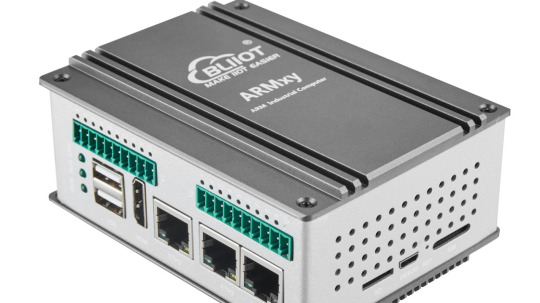
Launched New ARM Embedded Industrial Computer with RK3562J for ARMxy Series
The BL370 series is powered by the industrial-grade Rockchip RK3562/RK3562J processor, featuring a multi-core heterogeneous architecture with a quad-core ARM Cortex-A53 and a single-core ARM Cortex-M0, clocked at up to 1.8GHz/2.0GHz. It offers a robust solution with 4GB LPDDR4X RAM and 32GB eMMC storage, along with a rich set of I/O interfaces. The built-in 1 TOPS NPU supports deep learning capabilities, making it ideal for AI-driven applications.
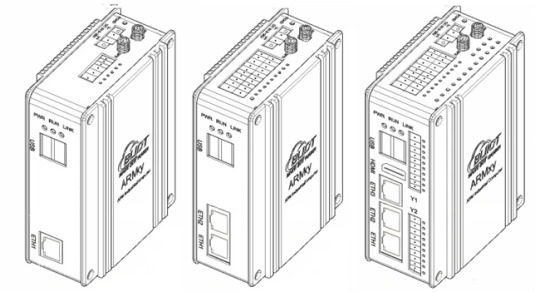
Key Features:
High Reliability and Cost-Effectiveness: The BL370 series is widely used in industrial control, edge computing, AIoT, artificial intelligence, communication management, AGV robots, machine vision, robotics, industrial IoT gateways, energy storage systems, automation control, and rail transportation.
Versatile Connectivity:
Data Acquisition and Control: Supports communication, PWM output, pulse counting, and more.
Video Processing: Capable of 1080P@60fps H.264 encoding and 4K@30fps H.265 decoding.
Wireless Communication: Built-in Mini PCIe interface supports Bluetooth, WiFi, 4G, and 5G modules.
Software and Development Support:
Operating Systems: Linux-5.10.198, Linux-RT-5.10.198, Ubuntu 20.04, Debian 11 (planned), Android 13 (planned).
Development Tools: Docker containers, Node-RED, and Qt-5.15.2 for GUI development.
Industrial Software:
Robust Design for Harsh Environments:
The BL370 series has undergone professional electrical performance design and high/low-temperature testing, ensuring stable operation in extreme conditions with temperatures ranging from -40°C to 85°C and resistance to electromagnetic interference. Its DIN35 rail mounting makes it suitable for various industrial applications.
Typical Application Areas:
Industrial Control
Energy Storage Systems (EMS/BMS)
AIoT and Artificial Intelligence
Smart Manufacturing
Communication Management
AGV Robots
Machine Vision
Edge Computing
Motion Control
Robotics
Rail Transportation
Smart Devices
The BL370 series combines high performance, reliability, and versatility, making it an ideal solution for demanding industrial and IoT applications.
0 notes
Text
ECE471: Embedded Systems – Homework 10 Power/Performance
Power and Energy Table 1: OpenBLAS HPL N=10000 (Matrix Multiply) Machine Processor Cores Frequency Idle Power Load Power Time Total Energy Raspberry Pi 2 Cortex-A7 4 900MHz 1.8W 3.4W 454s 1543J Dragonboard Cortex-A53 4 1.2GHz 2.4W 4.7W 241s 1133J Raspberry Pi 3 Cortex-A53 4 1.2GHz 1.8W 4.3W 178s 765J Jetson-TX1 Cortex-A57 4 1.9GHz 2.1W 13.4W 47s 629J Macbook Air Broadwell 2 1.6GHz 10.0W 29.1W 14s…
0 notes
Text
Bitcoin Solo Mining für Zuhause: Meine Erfahrungen mit dem MARS LANDER V2

Bitcoin Mining – für viele ein faszinierendes Thema, aber meist verbunden mit großen Farmen, lauten Lüftern und enormem Stromverbrauch. Doch es geht auch anders: kompakt, leise (na ja, fast…), mit WLAN, OLED-Display und stylischen RGB-LEDs. Der MARS LANDER V2 Solo Bitcoin Miner von BitcoinMerch.com verspricht genau das – ein schickes Gadget für zu Hause, das ganz ohne komplizierte Einrichtung in wenigen Minuten startklar sein soll. https://youtu.be/MRZY-kNbzKw Ich habe das Gerät kostenfrei für ein Review erhalten und war sehr gespannt: Kann ein Solo Miner für knapp 475 Dollar wirklich überzeugen? Und wie schlägt er sich im Vergleich zu anderen Lösungen, wie etwa dem Bitaxe Gamma, den ich bereits auf meinem Blog vorgestellt habe?





In diesem Beitrag nehme ich dich mit auf meine Reise: Von den ersten Eindrücken über die Inbetriebnahme bis hin zu meinen ganz persönlichen Erfahrungen mit dem MARS LANDER V2 – ehrlich, transparent und ohne Marketing-Blabla.
Was ist der MARS LANDER V2 eigentlich?
Beim MARS LANDER V2 handelt es sich um einen sogenannten Solo Bitcoin Miner, der es ermöglicht, direkt am eigenen Gerät ohne Mining Pool auf die Jagd nach neuen Bitcoin-Blöcken zu gehen. Das Konzept „Solo Mining“ klingt zunächst verlockend, denn wer einen Block findet, kassiert die komplette Belohnung – aktuell immerhin 3,125 BTC nach dem letzten Halving (Stand April 2024). Der MARS LANDER V2 hebt sich dabei deutlich von klassischen Mining-Geräten ab: Er setzt auf einen Raspberry Pi Zero 2 W als Herzstück, kombiniert mit einem GekkoScience COMPAC F Laptop Combo Stickminer, der die eigentliche Mining-Leistung liefert. Optisch ist das Ganze sehr ansprechend gestaltet: Ein kleines OLED-Display informiert live über wichtige Daten wie: - die zugewiesene IP-Adresse, - den aktuellen Bitcoin-Preis, - den aktuellen Blockpreis, - sowie die Anzahl der gefundenen Blöcke.





Dazu kommen acht RGB-LEDs, die sich bequem per IR-Fernbedienung steuern lassen – eine nette Spielerei, die dem Gerät einen gewissen „Gadget-Charme“ verleiht.




Die Herstellerbeschreibung liest sich fast wie das Datenblatt eines modernen Smart Home Geräts: ✔️ Einrichtung in wenigen Minuten per Smartphone oder PC ✔️ Betrieb über WLAN – kein LAN-Kabel notwendig ✔️ Stromverbrauch unter 17 W – etwa so viel wie eine einzelne LED-Lampe ✔️ Laut Hersteller: „Guaranteed to mine successfully – or your money back“ Doch was steckt wirklich dahinter? Und wie schlägt sich das Gerät in der Praxis? Genau darum geht es in den nächsten Kapiteln.
Technische Daten und Ausstattung
Bevor es an den praktischen Test geht, werfen wir zunächst einen Blick auf die technischen Details des MARS LANDER V2 Solo Miners. Denn die Hardware-Kombination und das Konzept hinter dem Gerät unterscheiden sich deutlich von klassischen Mining-Rigs. Basis: Raspberry Pi Zero 2 W Das Herzstück des MARS LANDER V2 bildet ein Raspberry Pi Zero 2 W, ein kompakter und stromsparender Einplatinencomputer, der für die Steuerung und das Setup des Miners verantwortlich ist.

Raspberry Pi Zero 2 W Hier die wichtigsten technischen Daten des Pi Zero 2 W: FeatureDetailsProzessorBCM 2710A1, 64-bit ARM Cortex-A53 Quad-Core @ 1 GHzArbeitsspeicher512 MB RAMWLAN2.4 GHz 802.11 b/g/nBluetooth4.2 / Bluetooth Low Energy (BLE)Anschlüsse1x micro-HDMI (Typ C), 1x micro-USB (Daten), 1x micro-USB (Strom)SpeichermicroSD-Slot für das BetriebssystemGPIOUnbestückter 40-Pin GPIO ConnectorAbmessungen65 x 30 x 5 mm Mining-Einheit: GekkoScience COMPAC A1 Laptop Combo Das eigentliche Mining übernimmt beim MARS LANDER V2 das aufgesteckte Modul GekkoScience COMPAC A1. Dabei handelt es sich um einen USB-Stick-Miner, der auf dem BM1397 ASIC-Chip basiert – bekannt aus der Antminer S17-Serie.



Der COMPAC A1 bietet laut Hersteller eine Hashrate von 300 bis 500 GH/s, abhängig von der gewählten Spannung und Kühlung. In meinem Test erreichte das Modul eine Leistung von 297,81 GH/s, was sich eher im unteren Bereich dieser Spannweite bewegt. Hier scheint der Fokus bewusst auf Stabilität und Energieeffizienz zu liegen, statt auf maximaler Leistung. Interessant: Diesen USB-Miner kannst du auch unabhängig vom Mars Lander v2 direkt an einem Windows-PC betreiben. Eine ausführliche Anleitung dazu findest du auf der offiziellen Seite unter: How to Set Up and Use the Compact A1 USB Miner on Windows Das macht den COMPAC A1 zu einem flexiblen Gerät, das nicht zwingend an den Mars Lander gebunden ist. Kühlung und Lautstärke Die Kühlung des COMPAC A1 Sticks übernimmt ein 40 mm Lüfter, der direkt auf dem Modul sitzt. Dieser sorgt zwar für eine zuverlässige Wärmeabfuhr, ist jedoch im Betrieb deutlich hörbar – vor allem wenn das Gerät auf einer harten Tischoberfläche steht.

Ein einfacher, aber wirkungsvoller Trick zur Reduzierung der Lautstärke: Ich habe dem Gehäuseboden des MARS LANDER V2 vier kleine Silikonfüße spendiert. Diese entkoppeln das Gerät spürbar vom Schreibtisch und senken die Übertragung der Vibrationen deutlich – das macht den Miner zwar nicht flüsterleise, aber die Lautstärke ist damit wesentlich angenehmer.


Wer es noch leiser möchte, könnte – ähnlich wie bei meinem Umbau des Bitaxe Gamma 601 – den Standardlüfter gegen einen hochwertigeren Noctua-Lüfter austauschen. Diese Lüfter sind bekannt für ihren leisen und effizienten Betrieb und könnten auch dem MARS LANDER V2 gut tun. Energieverbrauch Ein großer Vorteil gegenüber klassischen Minern ist der vergleichsweise geringe Stromverbrauch. Laut Hersteller benötigt der MARS LANDER V2 weniger als 17 W – das entspricht ungefähr dem Verbrauch einer einzelnen LED-Lampe. Ich habe den Stromverbrauch selbst nachgemessen, um diese Angabe zu überprüfen: Mit Hilfe eines Shelly Plug S Gen3 habe ich eine Leistungsaufnahme von 14,5 Watt im Betrieb ermittelt.

Damit bestätigt sich: Der MARS LANDER V2 ist tatsächlich ein echtes Low-Power-Gerät – auch wenn die Hashrate im Vergleich zu großen Mining-Rigs natürlich deutlich geringer ausfällt. Für alle, die einfach mal das Thema Solo Mining ausprobieren möchten, ohne gleich Angst vor der nächsten Stromrechnung zu haben, ist das auf jeden Fall ein Pluspunkt. Stromverbrauch & Betriebskosten des MARS LANDER V2 Bei einem gemessenen Stromverbrauch von 14,5 Watt und einem Strompreis von 0,30 €/kWh ergeben sich folgende Kosten im Dauerbetrieb: ZeitraumVerbrauchskostenpro Tagca. 0,10 €pro Wocheca. 0,73 €pro Jahrca. 38,11 € 💡 Hinweis: Der tatsächliche Strompreis kann je nach Anbieter variieren. Diese Werte dienen als Beispielrechnung bei Dauerbetrieb rund um die Uhr.
Lieferumfang
Der MARS LANDER V2 wird als fertig aufgebautes Komplettgerät geliefert – das heißt, es muss nichts mehr zusammengesteckt oder gelötet werden, alles ist direkt einsatzbereit. Besonders angenehm: Auch das Acrylgehäuse ist bereits vollständig montiert und transparent gestaltet, sodass man die Technik im Inneren gut sehen kann. Zum Lieferumfang gehören: - ✅ Der MARS LANDER V2 (komplett aufgebaut) inklusive transparentem Acrylgehäuse - ✅ microSD-Kartenleser für die einfache Datenübertragung am PC - ✅ 32 GB microSD-Karte (bei mir war sogar schon eine im Pi eingesetzt – ob das beabsichtigt ist, kann ich nicht sagen, praktisch ist es aber allemal) - ��� 5V – 3A Netzteil (mit Stecker für das US-Stromnetz) - ✅ IR-Fernbedienung, um die RGB-LEDs bequem zu steuern - ✅ Ein paar Sticker sowie Kärtchen mit QR-Codes, die direkt zur Anleitung und Einrichtung führen





Ein positiver Punkt, der mir direkt aufgefallen ist: Es wird keine billige No-Name microSD-Karte verwendet, sondern eine solide Speicherkarte von SanDisk (Typ microSD HC I, 32 GB). Das ist erfreulich, denn gerade bei Mining-Geräten, die 24/7 laufen sollen, ist eine zuverlässige SD-Karte wichtig. Was du selbst noch besorgen musst Da das Netzteil für den US-Markt ausgelegt ist, benötigst du für den Betrieb in Deutschland noch einen passenden Adapter für EU-Steckdosen. Solche Adapter gibt es bereits für wenige Euro, z. B. bei ebay.de oder amazon.de. 💡 Tipp: Wer das Gerät langfristig betreiben möchte, könnte auch überlegen, ein gutes 5V-3A Netzteil mit EU-Stecker direkt zu verwenden – das vermeidet mögliche Wackelkontakte durch billige Adapter.
Erste Inbetriebnahme und Einrichtung
Die Einrichtung des MARS LANDER V2 erinnert an die Vorgehensweise, die man bereits von anderen Solo Minern wie dem NerdMiner kennt – und sie ist erfreulich unkompliziert gelöst. WLAN-Einrichtung per Access Point Nach dem Einschalten startet der MARS LANDER V2 zunächst als WLAN-Access-Point mit dem Namen: MARSLANDER_SETUP Auf dem integrierten OLED-Display werden sowohl der Name des WLANs (SSID) als auch die zugehörige IP-Adresse zur Konfiguration direkt angezeigt – das erleichtert die Einrichtung enorm, da man die Informationen sofort am Gerät ablesen kann.

Die IP-Adresse zur Konfiguration lautet: 192.168.5.1 Nach dem Verbinden mit dem Access Point ruft man diese IP einfach im Browser auf (egal ob über Smartphone, Tablet oder PC) und gelangt so zum Konfigurationsmenü. Dort trägt man die Zugangsdaten für das eigene WLAN ein. ⚠️ Wichtig zu beachten: Der verbaute Raspberry Pi Zero 2 W unterstützt nur 2,4 GHz WLAN-Netze. Falls dein Router ausschließlich 5 GHz nutzt oder die SSIDs für 2,4 GHz und 5 GHz nicht getrennt sind, solltest du das vor der Einrichtung prüfen. Bitcoin Wallet nicht vergessen! Neben der WLAN-Konfiguration ist ein weiterer, entscheidender Schritt notwendig: Die Eingabe der eigenen Bitcoin Wallet Adresse. Nur so kann das Gerät im Erfolgsfall den gefundenen Block auch an dich auszahlen. Ohne eine gültige Wallet-Adresse würde das Mining zwar laufen, der gefundene Block würde dann aber nicht dir gutgeschrieben werden.
Erweiterbarkeit & Upgrades
Ein interessantes Detail am MARS LANDER V2 ist die seitlich verbaute USB-Schnittstelle, die nicht nur für Firmware-Updates dient, sondern auch zum Anschluss zusätzlicher Miner genutzt werden kann. BitcoinMerch.com bietet hierfür ein offizielles Upgrade-Kit an, das aus folgenden Komponenten besteht: - 3x GekkoScience COMPAC F oder A1 Miner - zusätzlicher Lüfter zur Kühlung (Performance oder RGB Lüfter) - passender USB-Hub Mit diesem Erweiterungs-Set lässt sich die Gesamthashrate auf bis zu 1,05 TH/s steigern – und das bei weiterhin kompakten Abmessungen. Der Miner wird dadurch deutlich leistungsfähiger, bleibt aber im Vergleich zu einem großen ASIC-Rig immer noch leise und wohnzimmertauglich. Preisübersicht (Stand April 2025): VariantePreis (USD)Upgrade-Kit mit 3x COMPAC F629,99 $Upgrade-Kit mit 3x COMPAC A1929,99 $ ⚠️ Wichtig: Diese Preise gelten für das offizielle Zubehör von BitcoinMerch.com und können je nach Verfügbarkeit und Marktentwicklung variieren. Damit bietet der MARS LANDER V2 eine flexible Einstiegslösung ins Bitcoin Solo Mining, die sich – bei entsprechender Investition – durchaus leistungsseitig erweitern lässt.
Fazit: MARS LANDER V2 – stylisches Mining-Gadget mit Schwächen
Nach einigen Tagen mit dem MARS LANDER V2 bin ich ehrlich gesagt etwas zwiegespalten. Einerseits ist das Gerät ein echter Hingucker: Das transparente Gehäuse, das OLED-Display und die steuerbaren RGB-LEDs verleihen dem Solo Miner einen modernen und hochwertigen Look. Die einfache Einrichtung über den integrierten Access Point funktioniert ebenfalls reibungslos. Auf der anderen Seite muss man klar sagen: Die maximale Hashrate von 250 GH/s (mit COMPAC F) oder 500 GH/s (mit COMPAC A1) ist im Vergleich zu anderen Solo Mining Geräten wie dem Bitaxe Gamma 601 deutlich geringer. Gerade wenn man den Preis betrachtet – rund 475 $ für die Basisversion des Mars Lander V2 – fällt auf, dass der Bitaxe Gamma 601 mit einem Preis von etwa 240 $ in der besten Ausführung deutlich mehr Leistung bietet (nämlich 1,2 TH/s) und zusätzlich mit AxeOS ein sehr detailliertes Webinterface für die Überwachung und Steuerung mitbringt. Besonders interessant – und auch ein wenig kritisch zu betrachten – finde ich die Aussage auf der Produktseite: „Mine Bitcoin successfully, GUARANTEED! or your money back“ In der Praxis ist es allerdings nahezu unmöglich, einen Solo-Blockfund zu garantieren, da dies auch mit einer hohen Hashrate immer noch hauptsächlich von Glück abhängt. Diese Garantie sollte also mit Vorsicht interpretiert werden. Wie geht es weiter? Read the full article
0 notes
Text
Price: [price_with_discount] (as of [price_update_date] - Details) [ad_1] From the manufacturer Brilliant Visuals Offering Ultra HD resolution with added depth, true colors, and textures, the Kodak 7XPROBL TV renders an engaging viewing experience. And, you can enjoy crystal clear and realistic images, as it is compatible with 4K HD resolution. Engaging Aural Experience Built with a powerful 40 W speaker, this TV delivers clear and impactful sound to complement and boost its high-quality visuals. And, you can take your pick from a slew of sound modes to enjoy a cinematic effect in the comfort of your home. Lifelike Gameplay Featuring HDR10 technology and a 4K display, this TV lets you enter the world of realistic gaming. Moreover, its clock speeds of up to 1.4 GHz offer seamless gameplay without a hitch. Elegant Design Featuring a sleek bezel-less design, this elegant TV lends any living space a sophisticated touch. Enjoy every bit of the content beyond boundaries with less bezel & more screen. Google Assistant You can effortlessly control this TV using simple voice commands, thanks to its built-in Google Assistant, which can be activated at the push of a button on the remote. Just say “Okay Google” to get answers to your questions Smooth Performance Housing an Amlogic chipset with an ARM Cortex-A53 processor that operates at clock speeds of up to 1.4 GHz, a quad-core CPU, and a Mali quad-core GPU, this TV renders seamless performance. Several Connectivity Options Sporting a host of different plugin options and ports, this TV is designed to offer a smooth viewing experience. With connectivity options, such as a USB port, an HDMI port, and Bluetooth, this TV enables you to connect practically any peripheral of your choice Powered by Android Integrated with an Android Operating System, this TV provides content from anywhere in the world. And, it employs artificial intelligence to design a personalized interface according to your content preferences.
Smart Remote Navigating through all the content is made easy with this TV’s ergonomically designed remote that comes with dedicated hotkeys for your preferred apps (Sony Liv, Amazon Prime Video, and YouTube) [ad_2]
0 notes
Text
L’Evercade VS est une console de salon rétro conçue par Blaze Entertainment pour les passionnés de jeux vidéo classiques. Sortie en décembre 2021, elle se distingue par son approche unique : elle utilise des cartouches physiques contenant des collections de jeux sous licence officielle, couvrant les ères 8, 16 et 32 bits, incluant des titres d’arcade, de consoles mythiques (Atari, NES, SNES, Mega Drive, PlayStation) et d’ordinateurs (Commodore 64, Amiga). Avec plus de 600 jeux disponibles sur plus de 60 cartouches, elle offre une bibliothèque riche et variée, allant de classiques comme Street Fighter II, Double Dragon et Tomb Raider à des pépites moins connues.
Compacte et élégante, la VS arbore un design rétro blanc et rouge inspiré de la NES, avec un clapet protégeant ses deux emplacements de cartouches, permettant d’accéder simultanément à jusqu’à 40 jeux. Elle se connecte à votre téléviseur via HDMI, offrant une sortie en 1080p avec des options d’affichage comme le mode « pixel perfect » ou l’ajout de scanlines pour une expérience authentique. Dotée d’un processeur quad-core ARM Cortex-A53 à 1,5 GHz et de 512 Mo de RAM, elle assure une émulation fluide, avec des sauvegardes sur cartouche pour reprendre vos parties sur une autre console Evercade, comme la portable EXP.
La VS brille par sa convivialité : interface intuitive, Wi-Fi pour les mises à jour, et support de jusqu’à quatre joueurs en multijoueur local grâce à quatre ports USB compatibles avec les manettes Evercade ou tierces (XInput). Une nouveauté, le mode TATE (rotation verticale) sur la version VS-R, ravit les fans de shoot’em up. Les cartouches, vendues entre 20 et 25 €, regroupent généralement 6 à 10 jeux, rendant la collection abordable et attrayante.
Cependant, quelques points faibles subsistent : les manettes officielles, jugées parfois peu ergonomiques, et l’absence de fonctionnalités en ligne comme le multijoueur ou une boutique numérique. De plus, certains jeux, comme les collections Namco 1 et 2, ne sont pas compatibles en raison de restrictions de licence.
L’Evercade VS, et sa version améliorée VS-R (sortie en juillet 2024 à 89,99 €), s’adresse aux collectionneurs et aux nostalgiques cherchant une expérience rétro légale et tactile, sans les tracas de l’émulation illégale. Avec son écosystème en expansion, incluant les consoles portables Evercade et les bartops Alpha, elle redonne vie à l’âge d’or du jeu vidéo tout en restant accessible et moderne.
#aiartcommunity#aiartworks#aiartist#aiinart#algorithmicart#artandtechnology#artofthefuture#artwithai#creativeai#digitalart#article#game#gaming
0 notes
Text
HISENSE 65 inča 65MR6DE 4K UHD LED 350 nita Interactive Display sa kamerom Cijena: € Poručiti putem našeg sajta ili posaljite info na dm www.kvarosfix.me Posjetite našu radnje: 📍Pete Proleterske Brigade 25 - Podgorica
65 inča 65MR6DE 4K UHD LED 350 nita Interactive Display sa kamerom
Brend: HISENSE
🛠️ Tip
✔️ Tip: Education Interactive Flat Panel
🛠️ Ekran
✔️ Veličina ekrana: 65 inča
✔️ Rezolucija: 3.840 x 2.160
✔️ Pozadinsko osvetljenje: Direct LED
✔️ Touchscreen: IR Multi-touch do 20 tačaka dodira
✔️ Nativni kontrast: 1.200:1
✔️ Osvetljenje: 350 nita
✔️ Odziv: 8ms
✔️ Uglovi gledanja: 178 stepeni horizontalni, 178 stepeni vertikalni
✔️ Vertikalno osvežavanje: 60Hz
✔️ Paleta boja: 1.07 milijardi boja
✔️ Ostalo: Anti-glare, 10-bit color, 72% NTSC color gamut, Senzor ambijetalnog osvetljenja
🛠️ Softver
✔️ Operativni sistem: Android 13
✔️ Programi / Ekskluzivne aplikacije / Servisi: Google Assistant, Google Play Store, Gmail, Google Chrome, Google Maps, Google Meet, Google Calendar, Google Drive, Google Docs, Google Sheets, Google Clasroom, Google Photos
🛠️ Procesor / Čipset
✔️ Procesor: ARM Cortex A73 quad core + A53 quad core
✔️ Radni takt procesora: 2.2GHz + 2.0GHz
✔️ Grafički procesor: ARM Mali G52
🛠️ Memorija
✔️ RAM memorija: 4GB
✔️ Unutrašnja memorija: 64GB
🛠️ Mreža
✔️ Wi-Fi: Da
✔️ Bluetooth: 5.1
✔️ Žična mreža (LAN): 10/100/1.000Mbps (Gigabit ethernet)
🛠️ Priključci / Slotovi
✔️ HDMI priključci: 3x HDMI 2.0 In, 1x HDMI Out
✔️ USB priključci: 3x USB 3.0, 1x USB tip C
✔️ Audio izlaz: 3.5mm, S/PDIF optički
✔️ Audio ulaz: 3.5mm
✔️ Ostali priključci / Slotovi: RJ-45, 1x RS-232 in, 1x RS-232 out
🛠️ Audio
✔️ Zvučnici: Ugrađeni
✔️ Snaga zvučnika: 2x 15W + 20W subwoofer
✔️ Tehnologije: Dolby Atmos
📦 Fizičke karakteristike
✔️ Montiranje na zid: VESA 600mm x 400mm
✔️ Masa: 34.5kg
✔️ Boja: Crno-siva
✔️ Pakovanje: Naponski kabl, Daljinski upravljač, Zidni nosač, Korisnička dokumentacija, 2x Stylus (olovka)
✔️ Stanje: Nekorišćeno
🛠️ Dodatne funkcije
✔️ Kamera: Da
✔️ Podržane tehnologije: NFC
✔️ Ostalo: 8 mikrofona dometa 12m
📝 Reklamacioni period
✔️ Reklamacioni period: 36 meseci
0 notes
Text
Introducing the FET-MX8MPQ-SMARC System on Module — Built for Real-World Edge Intelligence

Looking to power your next-gen edge AI solution with industrial-grade reliability?
Meet the FET-MX8MPQ-SMARC from Forlinx Embedded — a high-performance SMARC 2.1-compliant SoM based on the NXP i.MX 8M Plus Quad-Plus processor.
✅ 4× Cortex-A53 @ 1.6 GHz + Cortex-M7 @ 800 MHz
✅ 2.3 TOPS NPU + ISP for AI vision and multimedia processing
✅ Dual-band Wi-Fi 5 + Bluetooth 5.3 built-in
✅ –40°C to +85°C industrial temperature range
✅ Preloaded with Linux 6.1.36 LTS, BSP, drivers, and sample code
✅ Compatible with all SMARC 1.x/2.x carrier boards
Whether you're building for smart cities, industrial IoT, intelligent transport, or medical devices, this module is ready for deployment at the edge.
📩 Want to learn more or request documentation?
👉 Contact us: [email protected]
#Forlinx#EmbeddedSystems#NXP#iMX8MPlus#EdgeAI#SMARC#SOM#IndustrialIoT#LinuxEmbedded#AIoT#SmartCity#MachineLearning#ComputerVision#EmbeddedDevelopment
0 notes